-
 Bitcoin
Bitcoin $115000
0.88% -
 Ethereum
Ethereum $3727
2.86% -
 XRP
XRP $3.001
2.15% -
 Tether USDt
Tether USDt $1.000
0.03% -
 BNB
BNB $765.7
0.59% -
 Solana
Solana $169.5
3.52% -
 USDC
USDC $0.9999
0.00% -
 TRON
TRON $0.3391
1.24% -
 Dogecoin
Dogecoin $0.2059
2.68% -
 Cardano
Cardano $0.7418
2.24% -
 Hyperliquid
Hyperliquid $37.92
1.29% -
 Stellar
Stellar $0.4017
2.54% -
 Sui
Sui $3.508
2.67% -
 Chainlink
Chainlink $16.87
2.81% -
 Bitcoin Cash
Bitcoin Cash $569.4
2.08% -
 Hedera
Hedera $0.2472
0.22% -
 Ethena USDe
Ethena USDe $1.001
0.01% -
 Avalanche
Avalanche $22.29
1.22% -
 Litecoin
Litecoin $118.0
0.74% -
 UNUS SED LEO
UNUS SED LEO $8.924
-0.75% -
 Toncoin
Toncoin $3.236
1.65% -
 Shiba Inu
Shiba Inu $0.00001238
1.79% -
 Uniswap
Uniswap $9.827
3.02% -
 Polkadot
Polkadot $3.684
1.92% -
 Dai
Dai $1.000
0.01% -
 Monero
Monero $283.0
-2.73% -
 Bitget Token
Bitget Token $4.362
0.47% -
 Cronos
Cronos $0.1458
4.97% -
 Pepe
Pepe $0.00001054
2.58% -
 Ethena
Ethena $0.6238
9.53%
How can I tell if an NFT project is a scam?
Watch for red flags like anonymous teams, plagiarized art, unverified contracts, and promises of guaranteed returns—always research the team, community, and smart contract before investing in an NFT project.
Aug 07, 2025 at 02:28 pm
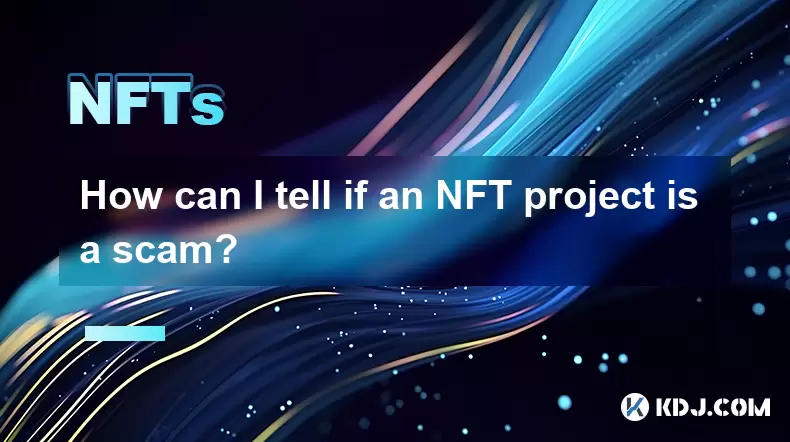
Understanding the Red Flags of NFT Projects
Identifying whether an NFT project is legitimate or a scam requires careful analysis of several key indicators. One of the most common signs of a fraudulent project is the absence of a clear roadmap. Legitimate NFT collections typically outline their development goals, milestones, and utility plans in a transparent manner. A vague or missing roadmap may suggest that the creators have no long-term intentions. Another red flag is anonymous team members. Reputable projects usually feature identifiable developers, artists, or community managers with verifiable social media profiles and professional backgrounds. When team members hide behind pseudonyms without any track record, it raises suspicion.
Projects that promise guaranteed returns or use phrases like “100x potential” in their marketing materials should be approached with extreme caution. These are often tactics used to lure inexperienced investors. Additionally, check if the project has a functional website with SSL encryption, a whitepaper, and links to official social channels. A poorly designed website with broken links or grammatical errors is a strong indicator of a scam.
Verifying the Team and Community Engagement
The credibility of an NFT project heavily depends on the visibility and activity of its team. Use tools like LinkedIn or Twitter to verify the identities of the people behind the project. Search for past projects they’ve worked on and assess their reputation within the crypto space. A genuine team will actively engage with the community through live Q&A sessions, AMAs (Ask Me Anything), and regular updates.
Examine the project’s Discord and Telegram groups. Healthy communities have active moderators, structured channels, and consistent discussions about development progress. If a Discord server is flooded with spam bots, or if moderators are overly aggressive in silencing criticism, it could be a sign of manipulation. Also, pay attention to how the team responds to questions. Evasive or dismissive answers to technical inquiries are warning signs.
Analyzing Smart Contract Security
One of the most technical but crucial steps in evaluating an NFT project is reviewing its smart contract. Scammers often deploy malicious contracts that allow them to drain funds or mint unlimited tokens. Always check if the contract has been audited by a reputable firm such as CertiK, Hacken, or OpenZeppelin. Audited contracts are not foolproof, but they significantly reduce the risk of exploits.
Use blockchain explorers like Etherscan to inspect the contract address. Look for the “Verified” badge and review the code for functions like renounceOwnership or setBaseURI. If the owner retains the ability to change the metadata or mint new tokens indefinitely, the project could be manipulated post-launch. You can also use tools like Token Sniffer or RugDoc to analyze contract risks and detect honeypot traps.
Assessing Minting Mechanics and Gas Fees
The minting process can reveal a lot about a project’s legitimacy. Be cautious of projects that require you to connect your wallet early or approve unlimited token spending. During minting, always ensure you’re on the official website by double-checking the URL and SSL certificate. Phishing sites often mimic real ones with slight misspellings.
When minting, review the transaction details in your wallet (e.g., MetaMask). Confirm the contract address matches the one published by the team. Avoid projects that charge abnormally high gas fees during minting, as this could be a tactic to exploit users. Use the "Custom Gas" option in MetaMask to set a reasonable limit. Never rush a mint—scammers create artificial scarcity with countdown timers to pressure users into making hasty decisions.
Checking for Plagiarized Art and Lack of Utility
A major red flag is plagiarized artwork. Many scam projects use AI-generated or stolen images from other NFT collections. Use reverse image search tools like Google Images or TinEye to verify originality. Upload a sample NFT image and see if identical or similar images appear elsewhere. Projects with derivative or low-effort art often lack long-term value.
Equally important is the utility of the NFT. Legitimate projects offer tangible benefits such as access to exclusive events, staking rewards, or governance rights. If the only stated benefit is resale value, the project may be designed solely for speculation. Review the whitepaper or official documentation to confirm what holders actually receive beyond the digital image.
Monitoring Post-Launch Behavior and Liquidity
After launch, observe how the team manages liquidity and trading volume. A sudden withdrawal of liquidity from a decentralized exchange like Uniswap is a classic sign of a rug pull. Use analytics platforms like Dextools or Uniswap Info to monitor liquidity pools. If the liquidity is locked via services like Unicrypt or Team Finance, it reduces the risk of sudden withdrawal.
Track the project’s social media for consistent updates. Abandoned Twitter accounts or inactive Discord servers post-launch indicate a lack of commitment. Also, check secondary market activity on OpenSea or Blur. Sudden spikes in volume followed by a crash may indicate wash trading—a tactic used to inflate perceived demand.
Frequently Asked Questions
How can I verify if an NFT contract has been renounced?
Visit the contract on Etherscan, navigate to the “Contract” tab, and look for the “Ownership” section. If the owner is listed as a burn address like 0x000...dead or the function renounceOwnership() has been called, the contract is likely renounced. You can also search the transaction history for the renounce event.
What should I do if I sent funds to a scam NFT mint?
Unfortunately, blockchain transactions are irreversible. Immediately disconnect your wallet from the site and revoke any token approvals using Revoke.cash. Report the website to platforms like Etherscan and MetaMask phishing detection to help protect others.
Are NFTs with celebrity endorsements always safe?
No. Many scams use fake endorsements or manipulated videos of celebrities. Verify endorsements through the celebrity’s official channels. Even real endorsements don’t guarantee legitimacy—due diligence on the project itself is still required.
Can a project be a scam even if it has a verified smart contract?
Yes. Verification only means the code is public—it doesn’t confirm safety. Malicious logic can still exist within verified contracts. Always combine contract verification with audits, team research, and community sentiment analysis.
Disclaimer:info@kdj.com
The information provided is not trading advice. kdj.com does not assume any responsibility for any investments made based on the information provided in this article. Cryptocurrencies are highly volatile and it is highly recommended that you invest with caution after thorough research!
If you believe that the content used on this website infringes your copyright, please contact us immediately (info@kdj.com) and we will delete it promptly.
- IREN Overtakes: A New King in the Bitcoin Miner Hashrate Race?
- 2025-08-07 16:31:29
- Memecoins Mania: Whales Eye Pepe Dollar (PEPD) as Bonk Cools Off, While MoonBull Hogs the Spotlight!
- 2025-08-07 16:51:17
- Unilabs, PEPE, and Investment Risk: Navigating the Crypto Hype
- 2025-08-07 16:31:29
- Meme Coin Mania: Rug Pulls, CZ-Inspired Tokens, and the Wild West of Crypto
- 2025-08-07 16:57:14
- HashFlare Founders Face the Music: Jail Time Looms?
- 2025-08-07 14:30:12
- Pepeto's Pounce: Meme Coin Mania Meets Blockchain Infrastructure
- 2025-08-07 15:10:12
Related knowledge
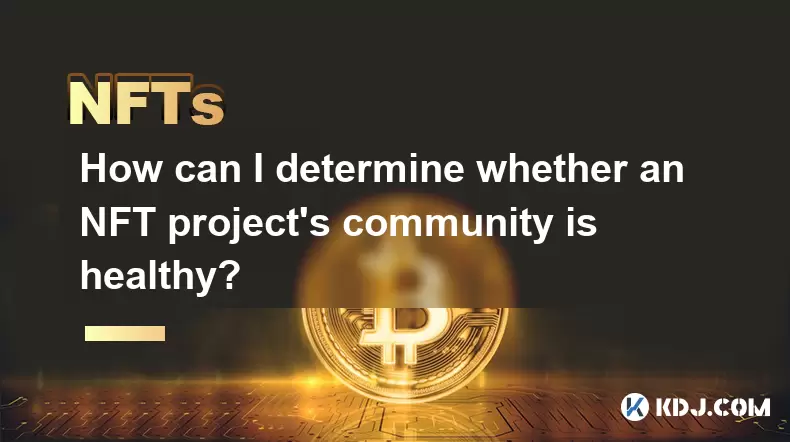
How can I determine whether an NFT project's community is healthy?
Aug 07,2025 at 06:29am
What defines a healthy NFT community?A healthy NFT community is more than just a large group of followers on social media. It reflects active engageme...

How can I participate in NFT airdrops?
Aug 07,2025 at 04:04am
Understanding NFT Airdrops and Their PurposeNFT airdrops are promotional events where blockchain projects distribute free NFTs to users who meet speci...
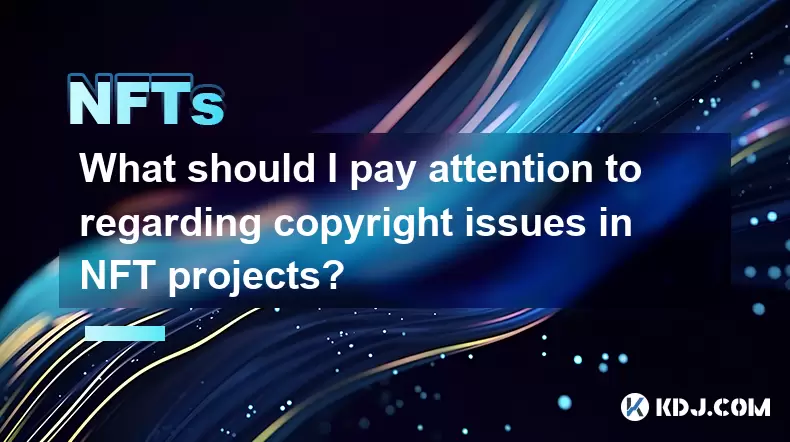
What should I pay attention to regarding copyright issues in NFT projects?
Aug 07,2025 at 06:47am
Understanding Intellectual Property in NFT ProjectsWhen engaging in NFT projects, one of the most critical aspects to consider is intellectual propert...
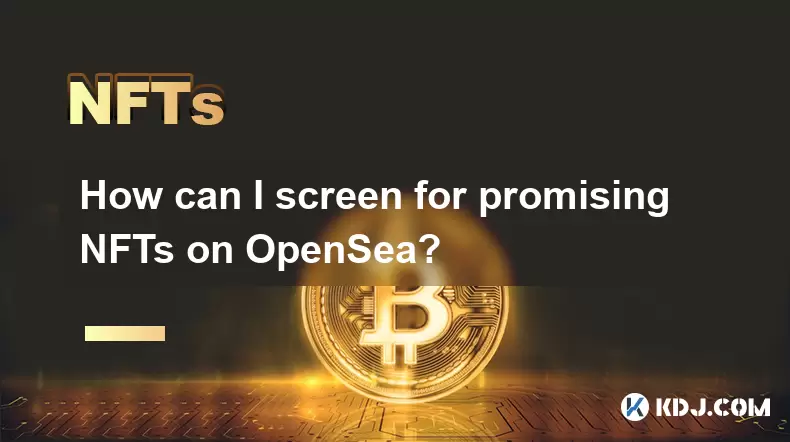
How can I screen for promising NFTs on OpenSea?
Aug 07,2025 at 02:10am
Understanding the NFT Landscape on OpenSeaBefore diving into how to screen for promising NFTs, it's essential to understand the ecosystem of OpenSea. ...

How can I tell if an NFT project is a scam?
Aug 07,2025 at 02:28pm
Understanding the Red Flags of NFT ProjectsIdentifying whether an NFT project is legitimate or a scam requires careful analysis of several key indicat...
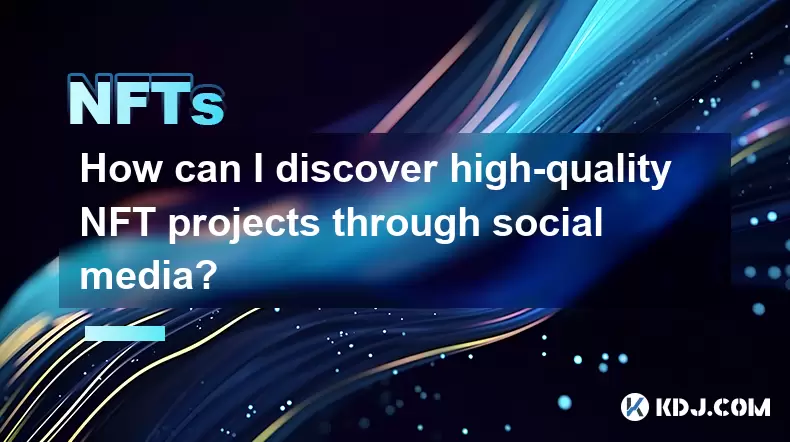
How can I discover high-quality NFT projects through social media?
Aug 07,2025 at 01:22pm
Understanding the Role of Social Media in NFT DiscoverySocial media platforms have become central hubs for the promotion and discovery of high-quality...

How can I determine whether an NFT project's community is healthy?
Aug 07,2025 at 06:29am
What defines a healthy NFT community?A healthy NFT community is more than just a large group of followers on social media. It reflects active engageme...

How can I participate in NFT airdrops?
Aug 07,2025 at 04:04am
Understanding NFT Airdrops and Their PurposeNFT airdrops are promotional events where blockchain projects distribute free NFTs to users who meet speci...

What should I pay attention to regarding copyright issues in NFT projects?
Aug 07,2025 at 06:47am
Understanding Intellectual Property in NFT ProjectsWhen engaging in NFT projects, one of the most critical aspects to consider is intellectual propert...

How can I screen for promising NFTs on OpenSea?
Aug 07,2025 at 02:10am
Understanding the NFT Landscape on OpenSeaBefore diving into how to screen for promising NFTs, it's essential to understand the ecosystem of OpenSea. ...

How can I tell if an NFT project is a scam?
Aug 07,2025 at 02:28pm
Understanding the Red Flags of NFT ProjectsIdentifying whether an NFT project is legitimate or a scam requires careful analysis of several key indicat...

How can I discover high-quality NFT projects through social media?
Aug 07,2025 at 01:22pm
Understanding the Role of Social Media in NFT DiscoverySocial media platforms have become central hubs for the promotion and discovery of high-quality...
See all articles

























































































